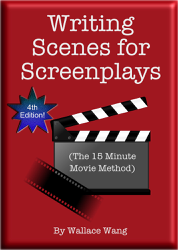Far too many writers play it safe by telling mild stories where nothing bad really happens to the hero but nothing outrageous does either. This creates a tame, meek, dull story that’s about as exciting to ride as a children’s roller coaster that barely goes up and down.
What every story really needs is massive contrast like a big hill on a roller coaster that dives down to the ground and then back up again. In other words, the best stories show massive contrast in a hero’s emotions.
To make the hero’s victory at the end more triumphant, you must sink the hero down as low as possible, and to do that, you must make the hero admit his or her own flaws. Since most people try to avoid admitting their flaws, your story must force the hero into a corner where he or she has no choice but to burst out admitting the truth to themselves.
Watch this scene from “Green Book,” which is a movie about a white man hired to drive a black man around the Deep South during the 1960s when racism ran rampant. This black man happens to be a world class pianist and he’s been hired to travel around the Deep South and play the piano for rich white people.
This situation immediately causes problems as he encounters racism wherever he goes and his white driver must constantly fight and help protect him. But what forces the black man to face the truth about himself is when he gets into an argument with his white driver about who’s blacker, the white man or the black pianist.
The white man claims he’s blacker because he grew up on the streets and he’s had to deal with all kinds of people all the time while the black pianist lives in luxury above Carnegie Hall but is isolated from black people and white people. So this scene from “Green Book” forces the black pianist to admit he lives a lonely life because he can’t associate with white people and he doesn’t feel comfortable around most black people.
As soon as the black pianist admits to himself (and to his white driver) that he doesn’t fit in anywhere does he hit the bottom of his emotional life. That sets up the greater contrast in a later scene when the white driver takes the black pianist to a black nightclub and the black pianist plays classical music on the club’s piano.
This shocks the crowd but they burst into applause at recognizing his talent. Then the house band gets on stage and the black pianist joins them in playing jazz for the club’s patrons to enjoy. For the first time, the black pianist finally feels like he fits in with black people because he can play the type of popular music that the black people the club recognize and enjoy.
By watching these two scenes, you can see the massive contrast between the two. In the early scene, the black pianist hits an emotional low when he admits he’s lonely and isolated from black and white people. Then in the later scene, the black pianist plays with a local band to the massive approval of the crowd. To his surprise, he enjoys playing that type of music as well, showing that he finally fits in with other black people.
This contrast between massive happiness compared to massive sadness and despair creates a greater emotional roller coaster ride for the audience, making a far stronger story.
For your own screenplay, always look to put your hero in the lowest possible emotional state where he or she is forced to admit to themselves their flaws. Then create another scene that shows the hero in the highest possible emotional state. The contrast between the lowest and the highest emotional states will make the highest emotional state that much more impactful.
Sign up to take a FREE course about how to write scenes in a screenplay.

